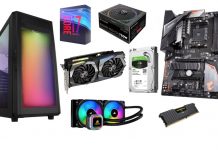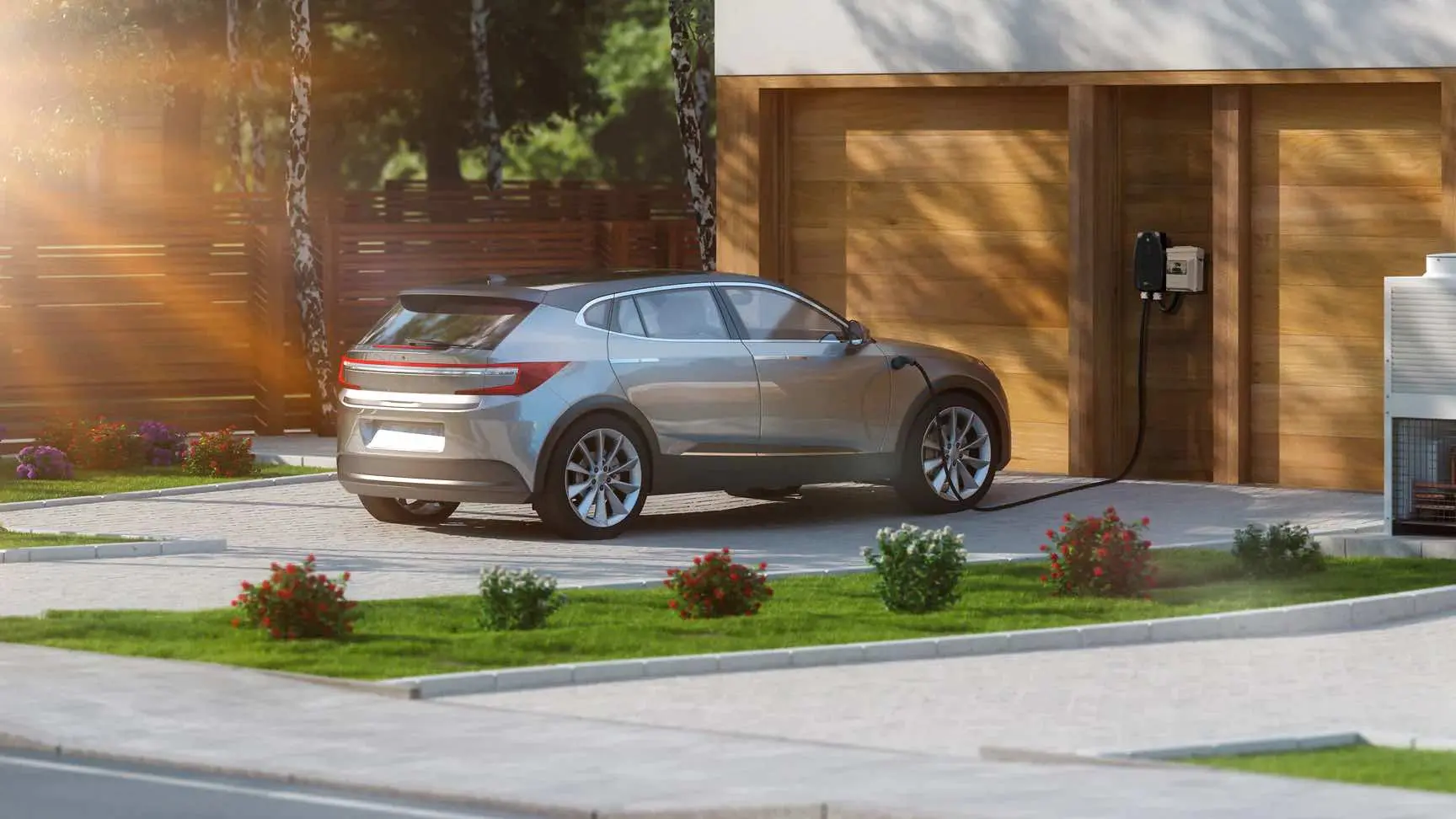
Having an EV charger at home ensures your electric vehicle (EV) is always charged and ready to drive. With a home EV charger, you won’t have to worry about where to charge your car before leaving for a long drive or whether you’ll need to stop somewhere to charge on your way to work. You’ll just be able to plug in your car and charge your vehicle at home, when and where it’s most convenient for you.
Table of contents
- What is EV charging?
- EV charging levels
- EV cables and connectors
- EV charger compatibility
- EV professional installation costs
- Features on EV chargers
- EV charger rebate
What is EV charging?
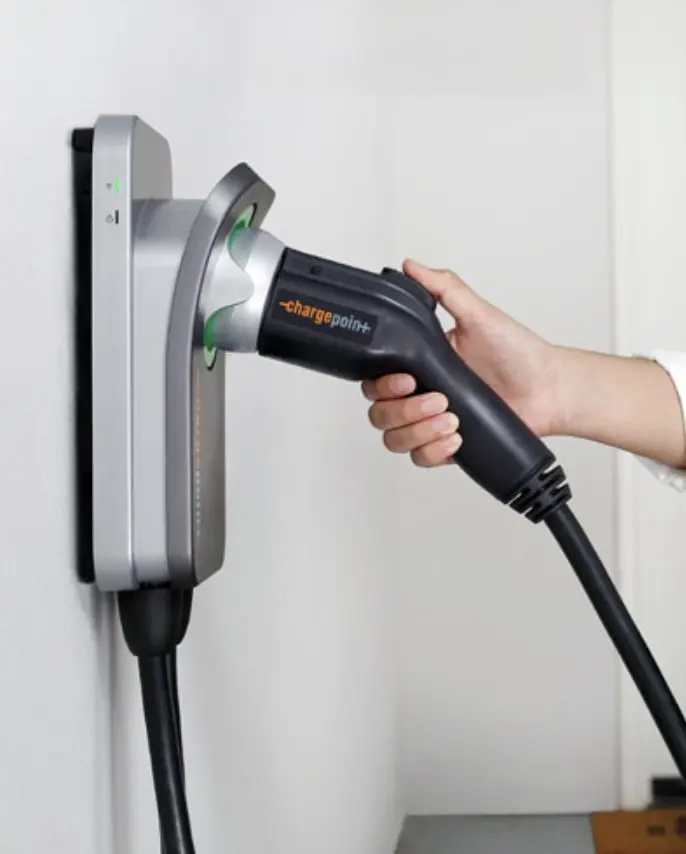
Charging electric vehicles at home is easy when you have a home EV charger. An EV charger will charge the battery of an electric vehicle at your home. There are different types of EV chargers and the charging speed will depend on which type you choose. Most EV chargers include a charging unit with a connector and cable that connects to your vehicle’s battery. They require different types of installation as well, and you may need to hire a certified electrician to set the EV charger up in your garage or yard.
Three EV charging levels
- Level 1 – A Level 1 charger can put out 120 volts AC. It plugs into any of your standard electrical outlets and is a good choice for anyone who doesn’t mind slowly charging their vehicle or who isn’t going to drive very far on a day-to-day basis. A Level 1 EV charger will give you approximately 3 to 8 km of use per hour of charging.
- Level 2 – A Level 2 charger uses 240 volts AC and requires its own dedicated breaker in your electric panel. This type of charger works a lot faster than a Level 1 and will give you approximately 16 to 96 km of use per hour of charging.
- Level 3 – A Level 3 charger is a DC charger so it’s faster than both Level 1 and Level 2. This is the type of EV charger you’ll often see used at service stations, although some public chargers may be also be Level 2. Level 3 charger will give you up to 80% of your battery charge in approximately ½ hour.
Which EV charging level is best for you?
Having an EV charger at home makes it very convenient to charge your car whenever you need to. Level 3 EV chargers are most commonly reserved for use at service stations or charging stations, so this comparison will focus on Level 1 vs Level 2. To choose between the two levels you’ll want to assess your driving habits and decide how fast you’d like to charge your vehicle.
Level 1 vs Level 2 EV charging
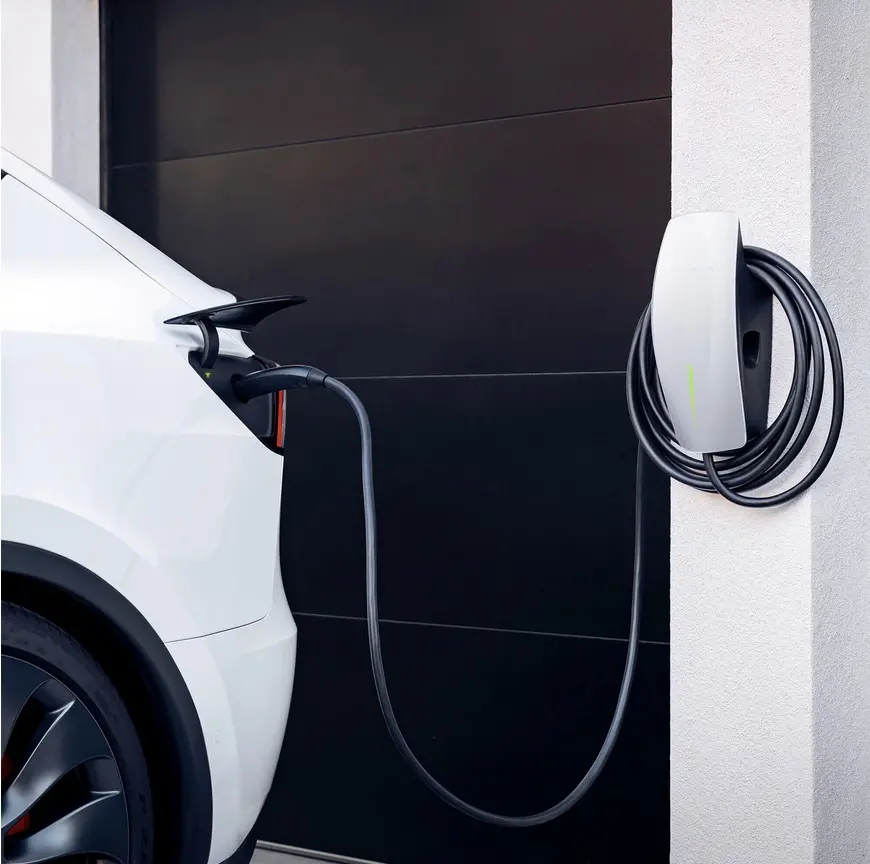
A Level 1 home EV charger is the least expensive type of EV charging station. Installation is easy because it plugs into your home’s standard electrical outlet, and you can begin using it as soon as you install it. Level 1 chargers are a great option if you’re happy with overnight charging or you only drive a short distance every day. The only downside to Level 1 chargers is that they charge very slowly. If you have a dead battery and you need to charge, it will take a few hours before you even have 25 km of battery life.
Level 2 home EV chargers offer much faster charging than a Level 1 charger. Depending on which type you choose, you could have a full battery charge in a few hours. This is the perfect type if you drive a lot or you drain your battery frequently. Level 2 home chargers are slightly more expensive to buy, and you’ll have to hire a certified electrician to install them. It also requires the use of a dedicated breaker in your electric panel and a certified electrician can take care of this also for you.
EV cables and connectors
Most Level 1 and Level 2 home EV chargers can use an SAE J1772 connector. This is a universal connector, also known as J plug, that can be plugged into and charge almost every type of electric vehicle. The only type of vehicle that can’t use a J1772 connector is a Tesla. However, Tesla provides the adapter required for its vehicles to use this same J1772 charging port. If you have more than one EV and you’d like to have the option to use both a Tesla connector and a J1772 connector, you can choose a charger that includes multiple cables and connectors. A certified electrician can also take care of setting up multiple cables and connectors.
Level 3 EV chargers use different types of connectors including CCS, CHAdeMO, and Tesla Supercharger. It also uses a high-powered DC charging cable that offers the fastest charging times. Not every EV is compatible with fast charging cables and connectors, so you’ll want to check your vehicle’s specifications before using a Level 3 EV charging station.
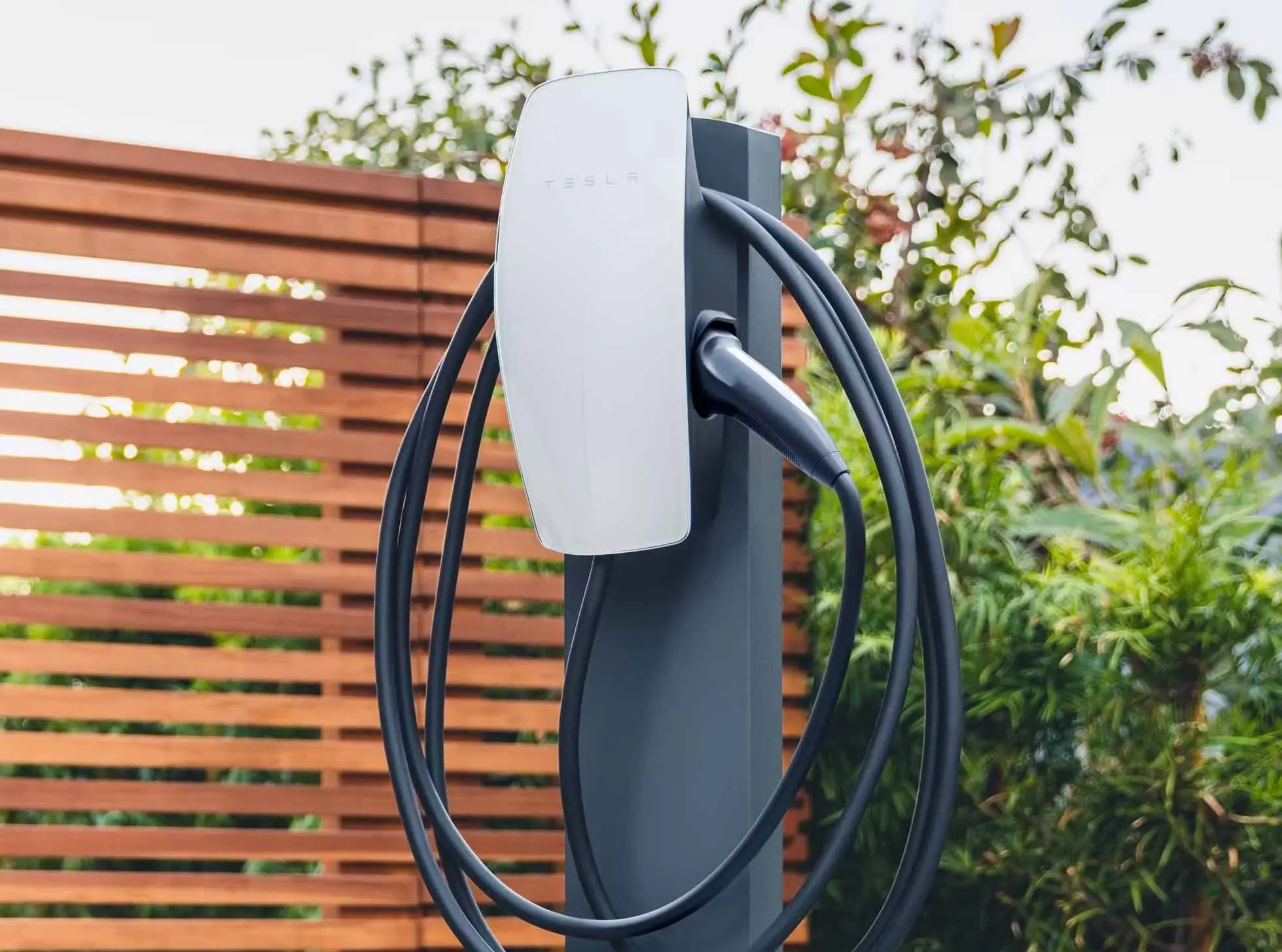
Factors that affect EV charger compatibility
Cables and connectors are important, but to choose the best charger for your home, you’ll also want to look at a few other factors.
- Max charging rate – You’ll want to choose a charger that is compatible with your vehicle’s max charging rate. For example, if your max charging rate is fast, you’ll want a high-powered charging station that can supply the speed and power it needs. If it’s slow, you may want to choose a Level 1 EV charger instead of a Level 2.
- Software Compatibility – Software is how your EV can communicate with the EV charger. If your EV software isn’t compatible with the charger, it may not connect or charge.
- Cable length – It is important that your vehicle can be parked close enough to the EV charger to allow for easy plugging-in. EV cable length varies depending on the charger you’ve selected. You’ll find most Level 1 and Level 2 EV chargers have a cable length of approximately 18 to 25 feet (5 ½ to 7 ½ meters).
EV charger installation cost
When choosing a Level 1 charger, the only set up required is plugging in the charger. For a Level 2 charger, you’ll need to take into consideration the EV charger installation cost. As a Level 2 EV charger is a 240-volt charger, it requires the installation of a special type of plug. This plug will need to be hard-wired directly to your electric panel. The electric panel is the box that holds all of your home’s circuit breakers, so you’ll have to hire an electrician to install the plug and modify your electric panel to fit the EV charger circuit.
Your electrician will also be able to determine if your current electric panel is capable of supplying the power required for a 240-volt plug. Some homes will need electrical upgrades after they realize their electric panels have a capacity limit that will not allow for a dedicated 240-volt breaker. Your electric panel may also be at max load due to your home’s current power needs, so to use a 240-volt EV charger at home you may have to factor in the cost of a new electric panel.
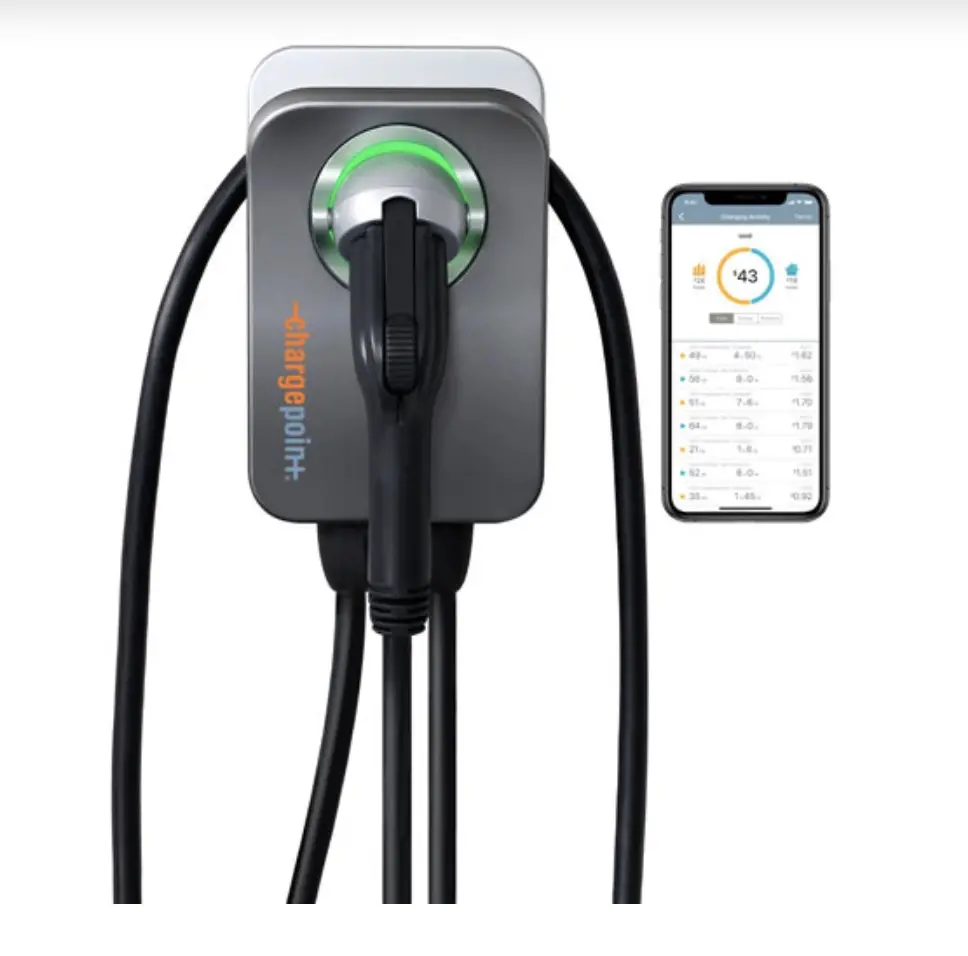
Features on EV chargers
An EV charger is a simple device in that it plugs in and charges your car, but EV charger technology has evolved to include unique features that add to the safety and convenience of having one.
1. Smart features
Some chargers will have Wi-Fi on board and can connect to your home network. They offer smart features including notifications when charging is complete or power management via an app on your phone. There are many types of chargers that use apps or web-based platforms to track how often you charge, and how fast your charging rate is, or can schedule a charge to turn on or off when you’d like it to. You can also track your charging history to see the cost of electricity used over time.
There are also chargers that will pair with your favourite voice assistant. You can find some types that connect to Google Assistant, Alexa, or integrate with HomeKit.
2. Changing charging speed
Some EV chargers let you switch up the charging speed. If you know you are parked overnight you can choose slow charging, but if you need a fast charge you can adjust the speed to get back on the road quickly.
3. Power Sharing with other vehicles
If you have two electric vehicles and you’d like to share your charger, there are chargers that let you power-share and charge both vehicles at once without causing an overload. This type of charger will manage the power available and distribute it as needed. If you have two EVs, you’ll want to look for an EV charger with dual ports so you can share power with your two vehicles.
4. LED displays
With an LED display on your EV charger, you’ll know at a glance what your power status is, whether the device is turned on or off, and how long you have until your charge is complete.
5. Communication with the grid
There are some types of chargers that will communicate with your local power grid so they only charge during non-peak hours.
6. Cable management
You can choose EV chargers that help you manage your cables when they aren’t in use. Some types will retract into the charger while others will offer a cable holder you can use to hang up your cable.
7. Safety features
Home chargers are designed to let you charge your vehicle safely, and they have overload protection built in to prevent the charger from overloading your home’s electrical network. These chargers have also undergone safety testing and have obtained different types of certification so you know your charger will meet all safety standards. Depending on which charger you choose, it may have UL (Underwriters Laboratories) certification, FCC (Federal Communications Commission), CSA (Canadian Standards Association), and others. CSA certification means your EV charger has been tested and is approved for home use according to Canadian safety standards.
All the EV chargers sold at Best Buy are UL-certified. If a charger is UL-certified it has undergone certification and testing by Underwriters Laboratories (UL). UL-certified chargers meet stringent safety standards, including all potential electrical, fire, and environmental hazards.
EV charger rebates
Electric vehicles are better for the environment and are one way you can help reduce emissions. They are also less expensive to run than a standard vehicle that uses gas, and having a home charger will help you keep your vehicle charged quickly and inexpensively. As an incentive to choose an EV charger, there are different Federal and Provincial rebates that can help offset the costs of the charger. You can check your local or provincial government website for the most up-to-date information on rebates, grants, or tax credits for purchasing or installing a home EV charging station.
Take the next step
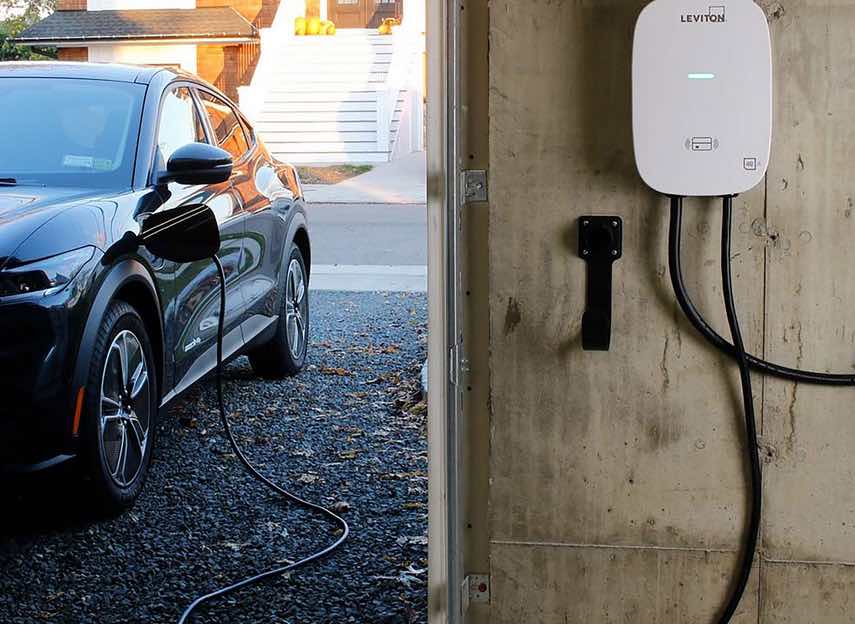
Having an electric vehicle is a great way to save on rising gas costs and ensure a more sustainable future for everyone on the planet. Setting up an EV charger at home will also add a level of comfort and convenience to using an electric vehicle. You can bring home the best EV charger for you by shopping at Best Buy.






































